Head gasket sealers are an affordable alternative for many car owners who do not want to spend lots of cash to replace a damaged head gasket. However, some head gasket sealers come with many solid additives, so it's possible to feel skeptical about using the sealer for your car. If you are wondering if a head gasket sealer is safe for your car's engine, this article has all the necessary information for you.
A head gasket sealer can ruin a car engine. While the sealant is generally safe to use, improper usage as well as choosing a head gasket sealer that is not suitable for your car can cause damage to the engine.
Some head gasket sealers with thick formulations and fiber additives can also clog up your car's thermostat valve, causing the car to overheat and possibly further damaging the engine.
When looking for a cheaper alternative if you need to replace a damaged head gasket, a head gasket sealer is a good solution to consider. However, it is more of a temporary fix to extend the life of your car. Continue reading below as we discuss everything you need to know if you are considering using a head gasket sealant for your car.
![Modern turbocharged eco-friendly engine or motor under vehicle hood close up - Will Head Gasket Sealer Ruin An Engine [Can It Cause Engine Damage]](https://vehq.com/wp-content/uploads/2022/09/Modern-turbocharged-eco-friendly-engine-or-motor-under-vehicle-hood-close-up-Will-Head-Gasket-Sealer-Ruin-A.png)
How Can A Head Gasket Sealer Cause Engine Damage?
Before we go into how a head gasket sealer can cause engine damage, we should first discuss the purpose of a head gasket. A head gasket is a piece of flat metal material placed in between the cylinder head and the engine block.
It's single but very crucial purpose is to maintain compression while preventing the coolant from leaking into the engine and the combustion gases from escaping into the coolant reservoir.
If a head gasket becomes damaged, the combustion gases can flow through the broken parts of the coolant jackets and reach the coolant reservoir. Combustion gases are very hot. Some reach over 6000 degrees Fahrenheit.
Once these very hot bubbles of gas reach the coolant, they will burn up the liquid, which will result in the car overheating and possibly creating permanent damage to the engine.
The ideal solution for a broken head gasket is to have the whole item removed and replaced. However, head gasket replacements are costly, and the price often varies from one car model to another.
At times, the price of labor costs more than the actual price of the replacement, and this scenario drives car owners with cheaper vehicles to simply opt for the head gasket sealer, which retails with a significantly lower price tag.
It is important to note that head gasket sealers are not meant to completely save you from replacing that damaged head gasket.
As we mentioned before, it is a temporary fix that can extend your car's life, but not save it. There is also the added concern of whether head gasket sealers are safe for the car's engine.
Head Gasket Sealer Had Lots Of Solid Additives
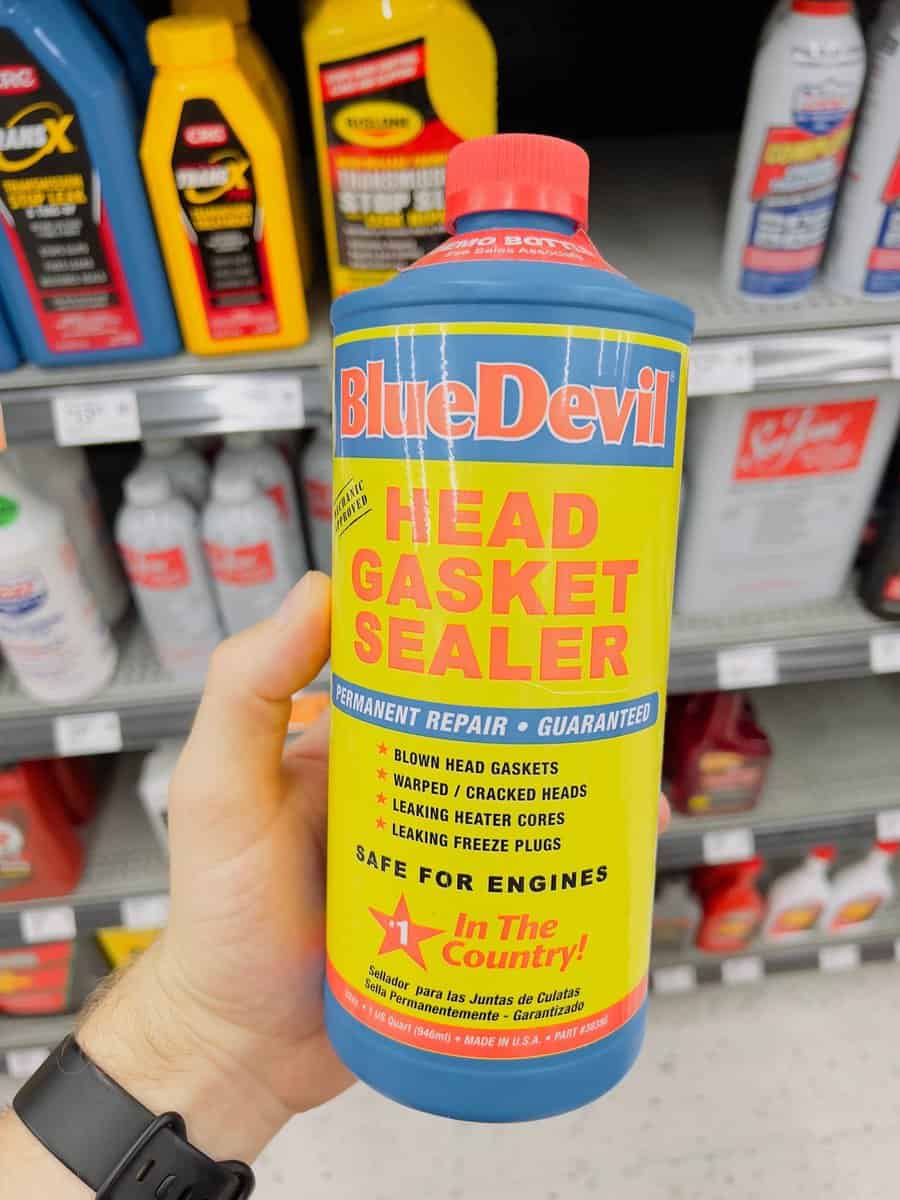
Head gasket sealers come in a liquid form that is meant to be poured into the car's coolant reservoir or radiator. The sealant is usually primarily made up of sodium silicate, which is essentially liquid glass.
Once the head gasket sealer reaches the damaged head gasket, the hot combustion gases will cause the liquid to evaporate from the sealant, leaving only the glass which will then harden and act as the seal over the damaged area of the head gasket.
These head gasket sealants come in different consistencies. It is up to you to analyze the ingredients well to decide what type of sealant your car requires.
Some head gasket sealers come with a lot of fiber or other solid additives that can be useful for quickly solidifying the liquid formula. However, some cars can't handle these solid additives. They may clog your car's thermostat valve, leading to more overheating and engine damage.
In this scenario, the head gasket sealer has not only failed to do what it was supposed to do but also made the damage worse.
Because additives caused the overheating, the abnormally high temperature can end up warping the head gasket, making more space for the combustion gases to escape into the coolant reservoir.
This creates a cycle of dangerous activity in your engine, where the head gasket keeps causing more overheating, and the overheating damages the head gasket even more.
When Should I Use Head Gasket Sealers?
Ideally, you should only use a head gasket sealer if you find that the price for a head gasket replacement costs much more than you are willing to spend.
If the car you own is on the expensive side, then replacing the damaged head gasket should be worth it to preserve the performance of your car.
However, if you own a cheaper car that you're not willing to spend hundreds of bucks on, then a head gasket sealer can extend your car's life until you either find a cheap head gasket replacement or finally decide to scrap the vehicle.
Head gasket sealers come in bottles with clear instructions printed on their labels. Since different products have different manufacturers, it is best to strictly follow the instructions on the specific head gasket sealer bottle.
Below are some symptoms to look out for if you suspect that your head gasket needs repair or replacement.
Car Engine Temperature Is Always High
If you noticed that your car's engine temperature is always warm or hot, then it is possible that your head gasket is leaking and requires immediate fixing.
You can assume the engine's temperature based on the coolant's temperature, which you can check on the gauge located on your car's dashboard.
Another possible way to check the temperature is by opening the car's hood and locating the engine thermostat. You can use an infrared thermometer to get the car's temperature readings.
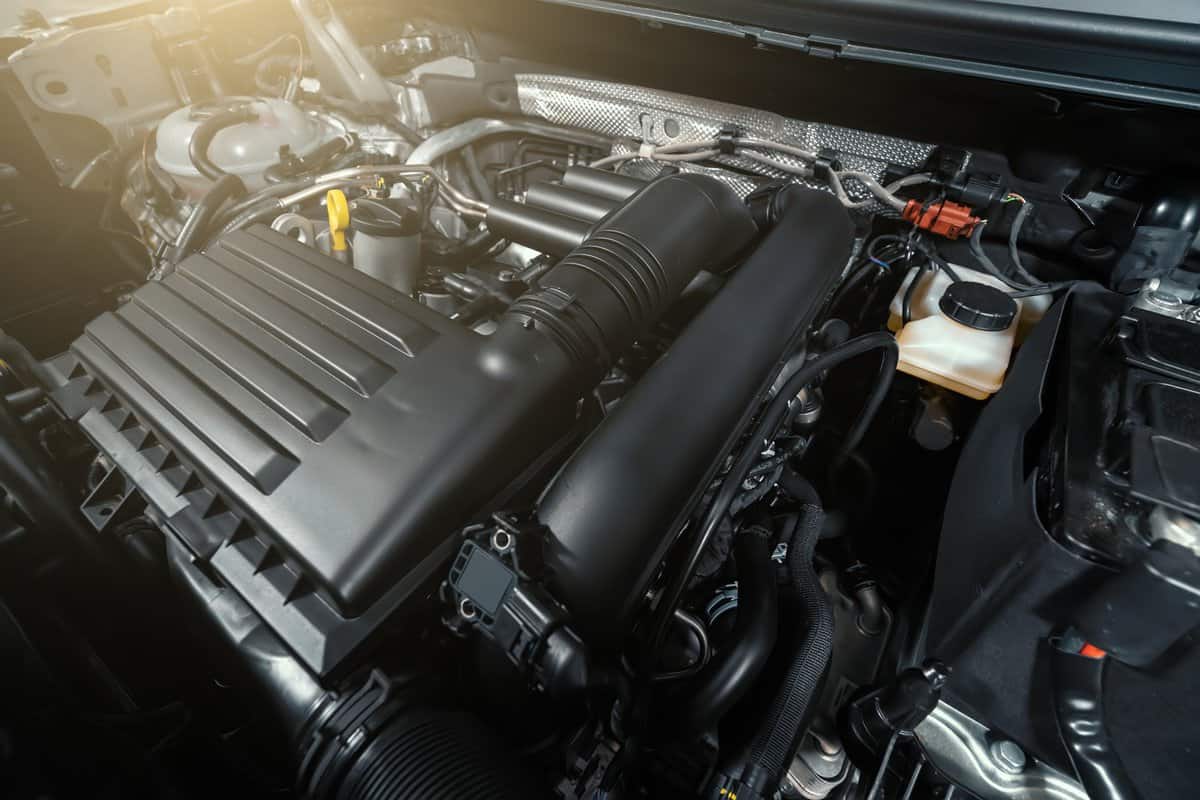
Car Coolant Reservoir Drains Quickly
As we mentioned above, a damaged head gasket allows space for the engine's combustion gases to escape into the coolant reservoir, causing the coolant liquid to evaporate due to the very high temperature of the gas bubbles.
If you notice that the number of times you refill the coolant chamber has grown significantly over a short period of time, this could indicate that your head gasket needs to be repaired.
This is because the hot gases continuously vaporize and use up the coolant, causing an increase in the number of times you have to refill the coolant chamber.
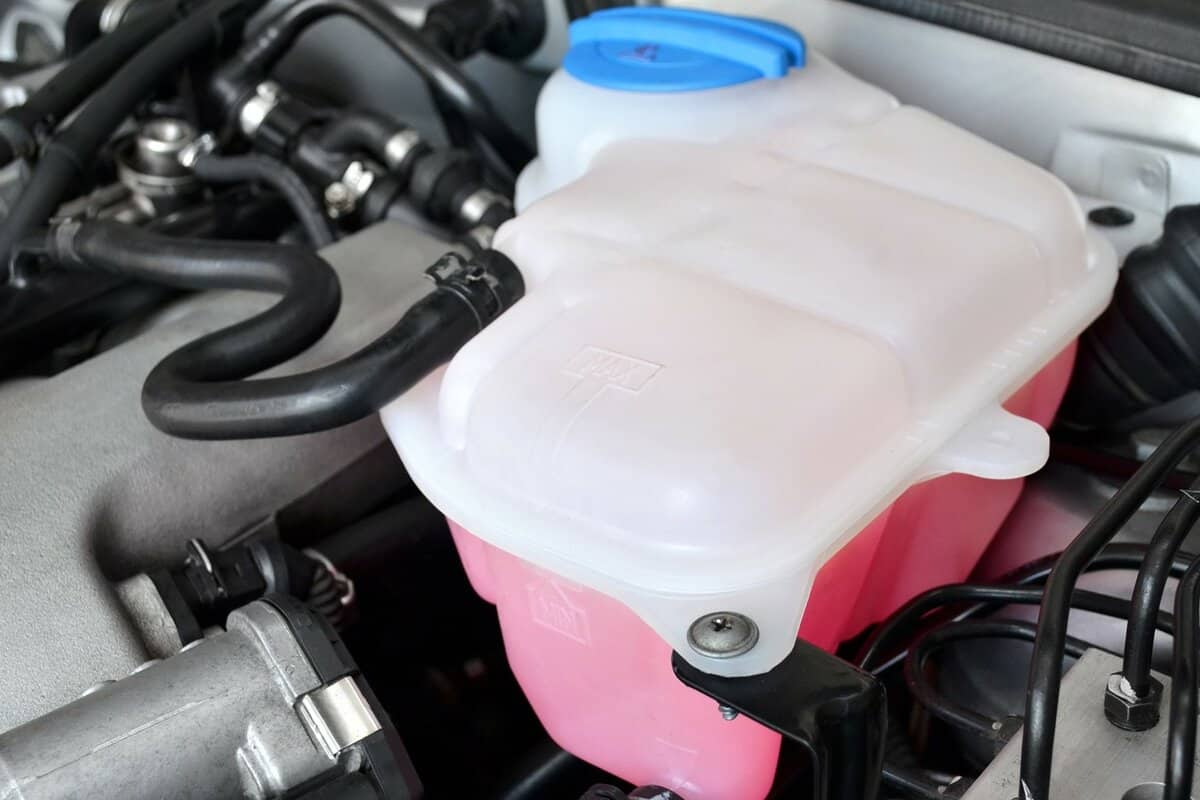
Car Coolant Is Leaking Into the Car's Engine
While the aforementioned sign can indicate that you need a head gasket repair, it is possible that the coolant could be leaking someplace else.
One way to check if the coolant is actually leaking into the engine is to first check the coolant hoses and the water pumps. If the leaks are not there, then the coolant could be escaping into the engine.
How Do I Know If Coolant Is Leaking Into My Car's Engine?
Before checking the engine for leaks, make sure to start the car and allow it to reach its operating temperature.
This will allow the car's cooling system to become pressurized, letting the coolant liquid flow to help you figure out where it leaks off to. Below are a number of areas in your car you can check to see if the coolant is leaking into the engine.
Exhaust Pipe
If you notice that your car's exhaust smoke is white and swirling, it could be a sign that the coolant is leaking into the engine due to a damaged head gasket. White smoke from the car's pipe is usually due to the coolant mixing into the engine's combustion process.
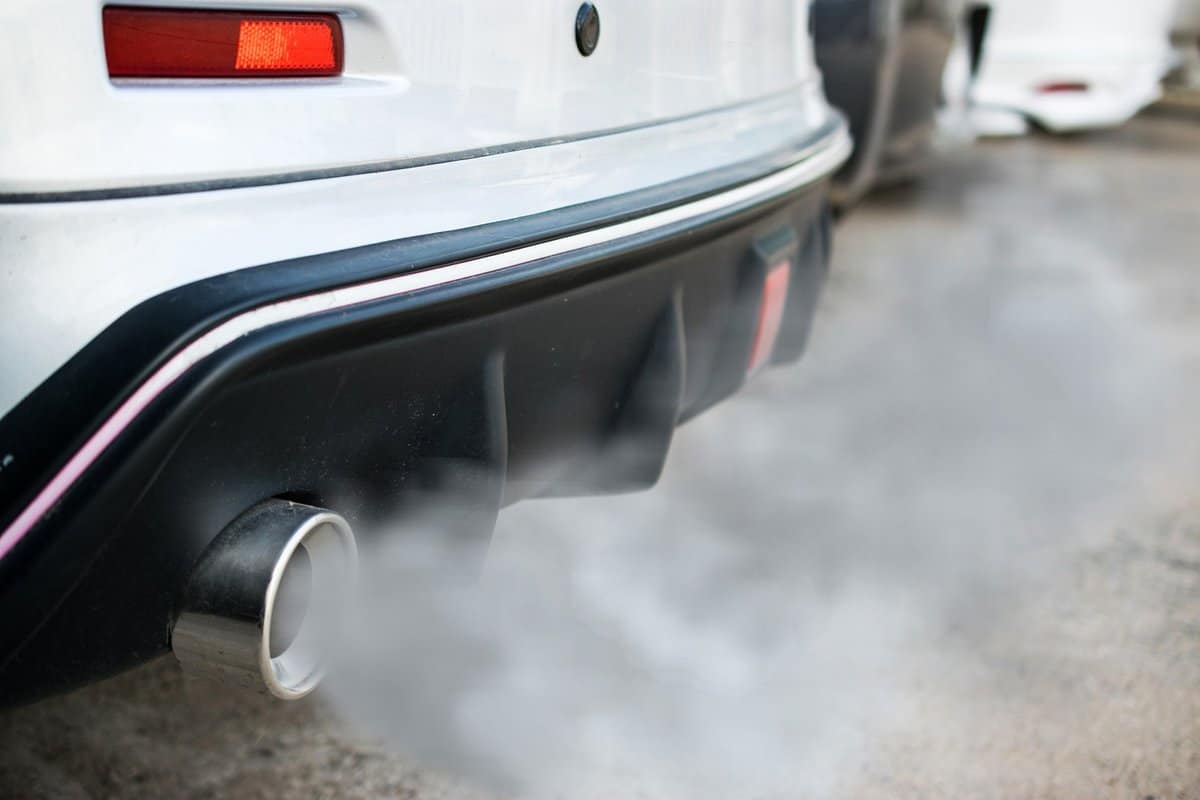
Engine Oil
Coolant leaking into the engine can contaminate the oil. To see if the coolant has mixed into the engine's oil, open the lid of the oil pan and check if the oil has turned from a smooth, dark texture to a white, caramel-looking substance.
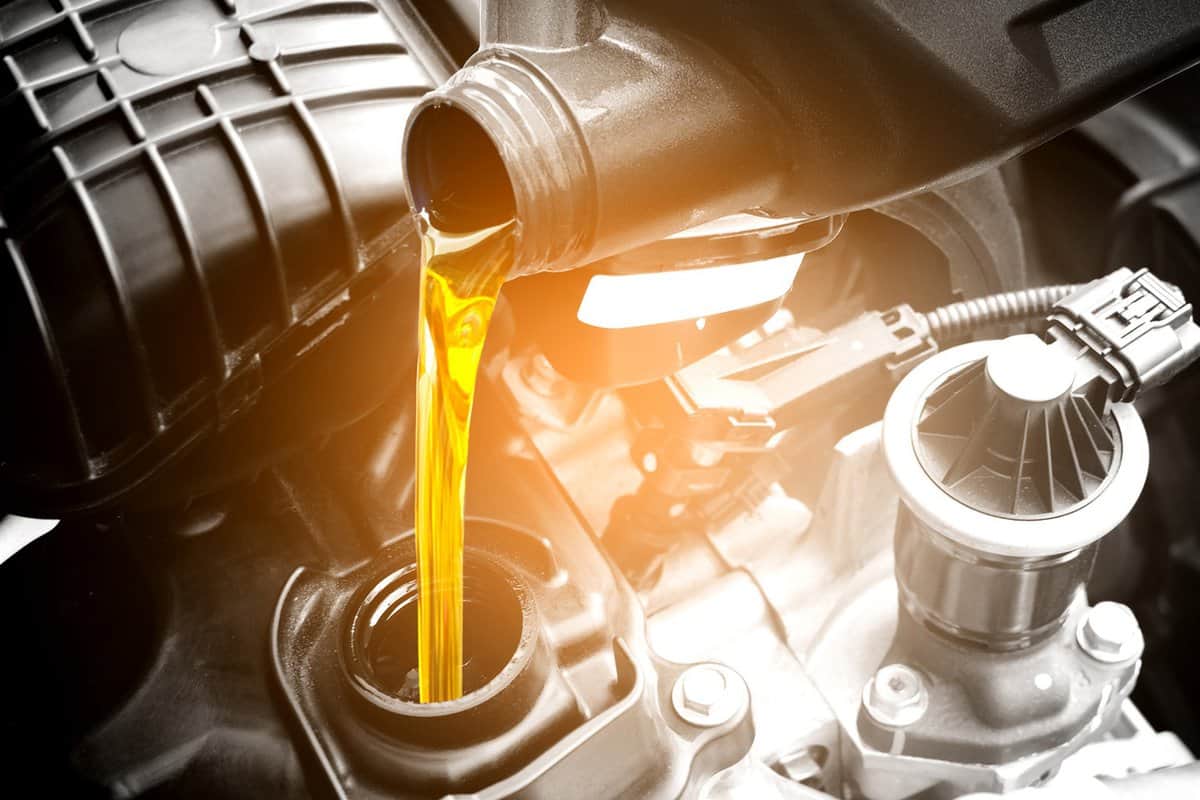
If the oil is low, then you can use a dipstick and dip it into the oil pan. If the dipstick reveals a frothy, almost creamy-looking substance, then this is clear evidence of a coolant leaking into the engine.
Coolant Reservoir
The easiest way to determine if coolant is leaking into the engine and combustion gases are escaping into the coolant is to check the coolant reservoir itself.
If you notice bubbles inside the chamber, this could signal that there is damage in your head gasket causing the combustion gases and coolant to leak.
There are also combustion leak fluid testers that you can purchase from automobile shops that allow you to check the coolant for combustion gases at home.
To Wrap Up
Head gasket sealers are a cheap option for car owners who do not want to spend money on an expensive head gasket replacement. These sealers can be brought in automobile shops, allowing car owners to fix their car's head gaskets in their own homes.
In this article, we discussed the possibility of a head gasket sealer damaging a car's engine. We also discussed some potential scenarios that can signal a damaged head gasket.
Make sure to carefully assess the damage of your car so that you can take the proper steps required to prolong the car's life, as well as ensure your safety as the driver.
Made it to the end? Check out some of our other related posts!
